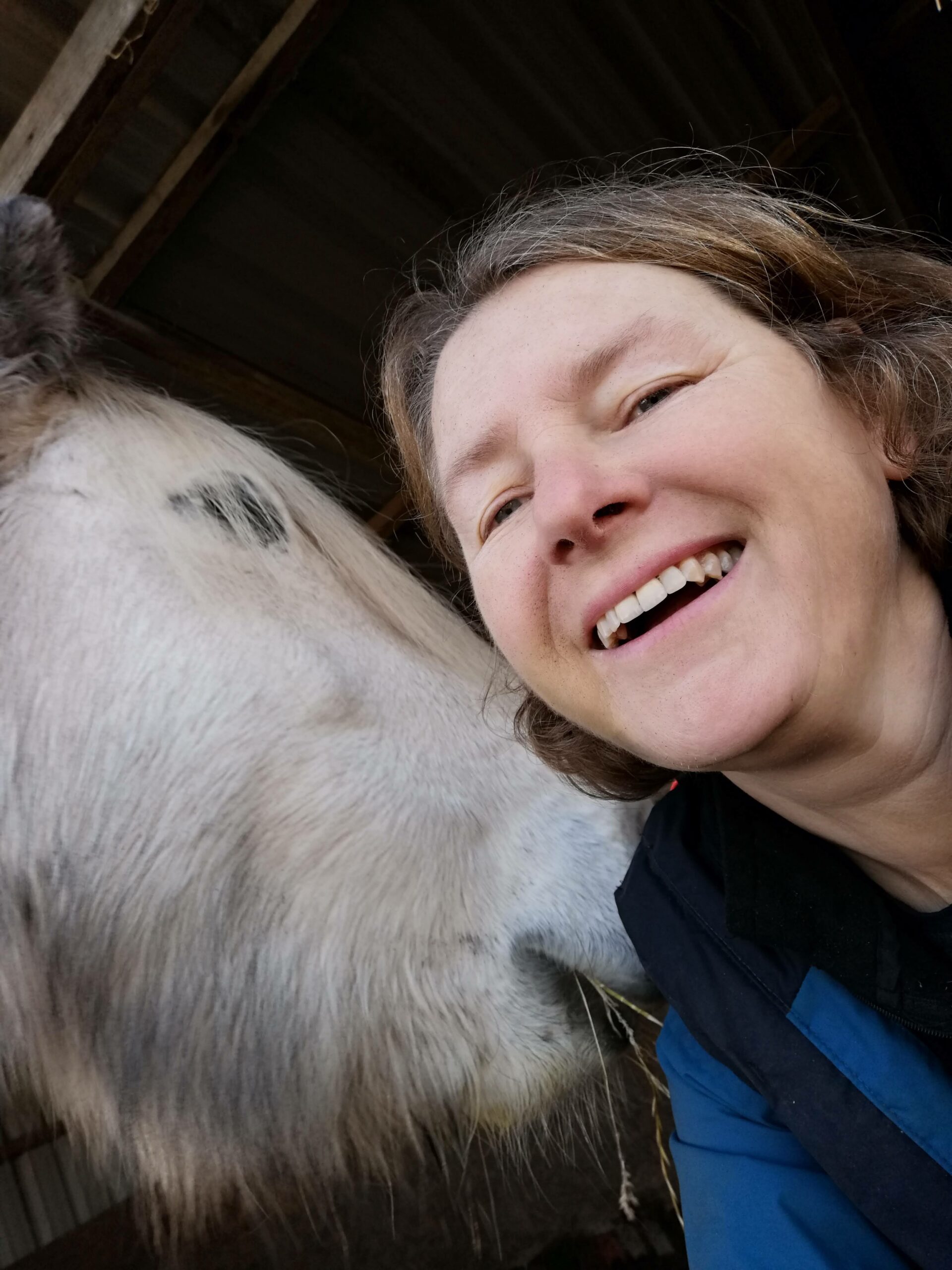Pets and Their People Blog
The Station Cue: Its Many Uses for Equids and How to Train It
Have you thought about teaching your equid to station? Here’s what stationing is and a few reasons why it’s a great thing to train!
What is Stationing?
Stationing is where you teach your horse, pony, donkey or mule to stay in a specific place. It can be teaching them to stay at a tie up point, teaching them to “park” when you drop the lead rope or teaching them to stand on a mat without walking off. All it means is that they understand, when you give the cue, that they should stay where they’re standing until they get another cue from you. You teach stationing using rewards, and you gradually increase the time your equid friend stays after getting the cue.
Stationing is a great, fun and safe way to teach your horse to tie up. Because it uses rewards to train, your equid will enjoy the process and will be relaxed and happy to get your cue to station.
So you can be confident, for example, that when you tie your horse if you’re out and about and need to leave them for a moment, they understand exactly what you want them to do. They won’t try to pull back or escape, because they know that if they stand in that place, you’ll return, there will be a reward and they will get to move off again.
Why Teach Your Equid to Station?
Stationing can be very helpful if you have free-range ponies or donkeys. If you need to do chores, but they take a long time because your equid pals want to chat and interact, you can ask them to station on a mat. That way, they’re still enjoying being around you but you can get on with your work. Once they’ve learned to station on mats, and built up duration, you can work away while they enjoy playing “statues” for occasional rewards and scratches! Watch this video for a demonstration:
How to Train the Cue
You don’t even need to have a specific place for your horse to station. If you train “groundtie” or “park” using this method, your horse learns that when you drop the lead rope on the ground, they should stay there until you come back and pick up the rope again. This is an invaluable skill for your horse to learn if you trail ride or lead out on walks for non ridden equids. It’s trained the same way – starting with rewarding for a moment of stillness and building up the time your horse stands. Add the cue once your horse is standing confidently for a short while – lead your horse forward, stop, drop the rope and then reward your horse for staying in position. Gradually build up the time, and then start moving around – walk away and walk back. Walk around your horse and back. Walk briefly out of sight, and then back.
Once your horse has the basics, you can get creative and find lots of ways to use this great skill. You’ll find it pays off if, for example, your mule needs to put a hoof on a block and stand still for a hoof x-ray. Or if you want to teach your pony to stand on a pedestal. How many different uses can you think of for this simple behavior? All you need is an equid pal, a clicker and some tasty rewards!
About the Author
 Dorothy Heffernan, PhD was born and raised in Dublin in the Republic of Ireland, where she was a horse and pony mad child. She moved to Scotland to study psychology and took her love of all things equid with her. After graduating with a PhD from the University of Strathclyde in Glasgow, she chose to specialize in equine behavior and has been working as an equine behavior consultant for 17 years, helping people solve behavior challenges with their horses, ponies, donkeys and mules. In 2021, she joined with three other force-free equid trainers to launch Positive Equine Training Scotland, offering support and training to people in Scotland who want to learn about new gentle and compassionate ways of working with their equid friends. Getting to meet and work with a variety of equids, big, small, long and short eared has been Dorothy’s dream all her life, and now she’s living that dream.
Dorothy Heffernan, PhD was born and raised in Dublin in the Republic of Ireland, where she was a horse and pony mad child. She moved to Scotland to study psychology and took her love of all things equid with her. After graduating with a PhD from the University of Strathclyde in Glasgow, she chose to specialize in equine behavior and has been working as an equine behavior consultant for 17 years, helping people solve behavior challenges with their horses, ponies, donkeys and mules. In 2021, she joined with three other force-free equid trainers to launch Positive Equine Training Scotland, offering support and training to people in Scotland who want to learn about new gentle and compassionate ways of working with their equid friends. Getting to meet and work with a variety of equids, big, small, long and short eared has been Dorothy’s dream all her life, and now she’s living that dream.
